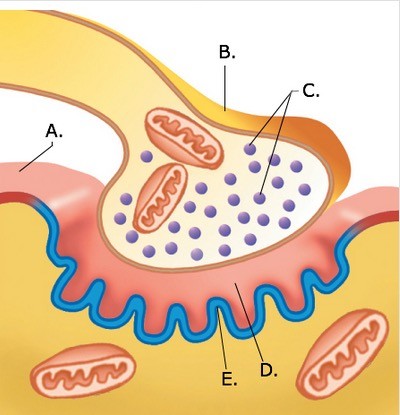Describe how blood calcium levels are regulated
What will be an ideal response?
Parathyroid hormone (PTH)—elevates plasma concentration of Ca2+; secreted by parathyroid glands, raises free plasma Ca2+ levels by its effects on bone (increases activity of osteoclasts) and kidneys (increase calcium reabsorption and phosphate excretion), and facilitates activation of Vitamin D, which increases digestive absorption of calcium. Secretion controlled by circulating levels of free calcium; if calcium levels fall, PTH secretion stimulated; if calcium levels rise, PTH secretion inhibited. Calcitonin—decreases plasma concentration of Ca2+; produced by C cells of thyroid gland, secreted in response to increase in plasma Ca2+ concentration; acts to lower plasma Ca2+ levels by inhibiting activity of bone osteoclasts; unimportant except during hypercalcemia, which is rare and may play a role in protecting skeletal integrity during times of calcium demand (pregnancy and lactation).
You might also like to view...
In a 28 day cycle, ovulation typically occurs around day
A) 3. B) 7. C) 14. D) 21. E) 28.
Directly causes mechanical motion.
A) Skeletal B) Nervous C) Integumentary D) Muscular
Which of the following is a sympathetic reflex?
A) defecation B) swallowing C) coughing D) pupillary reflex E) urination
 The figure illustrates a detailed drawing of the neuromuscular junction. What does "C" represent?
The figure illustrates a detailed drawing of the neuromuscular junction. What does "C" represent?
A. Sarcolemma B. Presynaptic terminal C. Synaptic vesicles D. Synaptic cleft E. Postsynaptic membrane